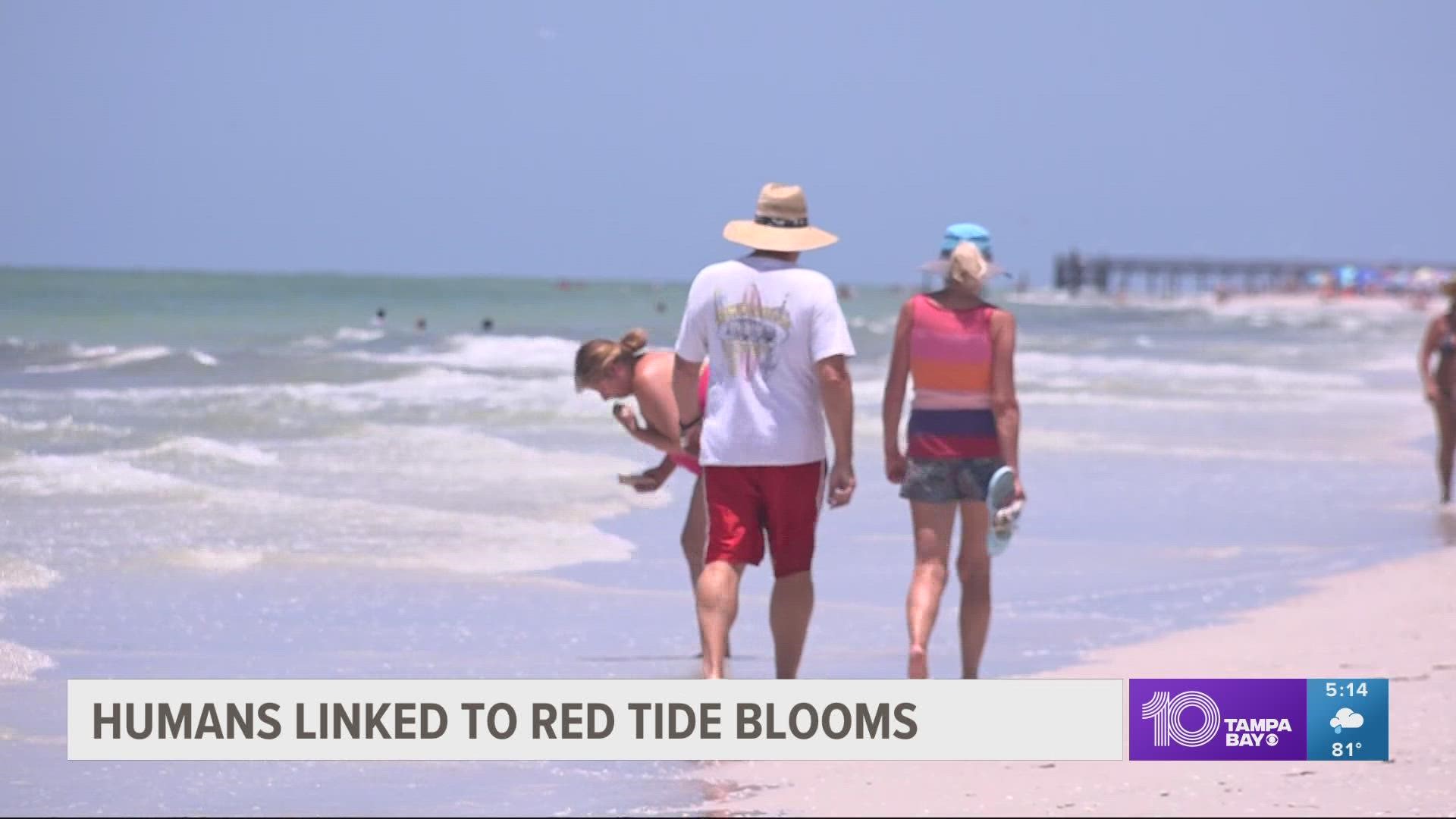SARASOTA, Fla. — The Florida Fish and Wildlife Conservation Commission's current red tide map shows there is no red tide detected statewide.
Researchers explained that if we want to see this continue, we need to change our actions.
"There are these two schools of thought. One of them is, humans have nothing to do with red tide because the conquistadors talk about it and the next is well, red tide is algal blooms, it has to be due to humans. The reality is, it’s between the two," said Dave Tomasko, the executive director for the Sarasota Bay Estuary Program.
A new report from the University of Florida shows humans are linked to making red tide worse.
"The worst thing that we can do is add a lot of nutrients to our waters," Tomasko said.
The study focuses on the Caloosahatchee River in Southwest Florida. That river has experienced severe algal blooms in the past.
Scientists at the University of Florida looked at red tide blooms near Charlotte Harbor. They found that nutrient-enriched discharges from the Caloosahatchee River intensified Karenia brevis — the species that causes red tide. Scientists also found nitrogen inputs intensified red tide.
Tomasko explained people are adding nitrogen into our water every day.
"If you want to make red tide worse, we’re doing a great job because we are loading our waters with nitrogen, which is the nutrients they need," Tomasko said.
Tomasko explained people need to pick up after their pets, not toss those grass clippings in the street and pay attention to how much and when they're using fertilizer.
"Our estimates are we are loading two to three times as much nitrogen into the water compared to when no one lived here," Tomasko explained.
It's not just people, but our city and county leaders can help, too.
Tomasko said Sarasota Bay is improving in water quality because leaders are spending $900 million over the next five years on wastewater infrastructure.
Tomasko explained the money comes from five local governments. Manatee County, Sarasota County, Bradenton, Sarasota, and Longboat Key contributed the money to spend over the next five to 10 years. There will be upgrades to wastewater treatment plants, stormwater retrofits, plus repairing wastewater and stormwater infrastructure.
"It’s not getting better by chance, it’s getting better because we are spending huge amounts of money to fix our wastewater infrastructure to reduce our stormwater loads," Tomasko said.
Tomasko believes those in Tampa Bay need to change their actions.
"The city of Tampa does a great job with treating its wastewater, but most of it is still discharged into the bay every day," Tomasko added.
Ultimately, repairing and fixing storm and wastewater infrastructure will help, but it’s expensive.
"It’s solvable, but it cost a lot of money," he said.

